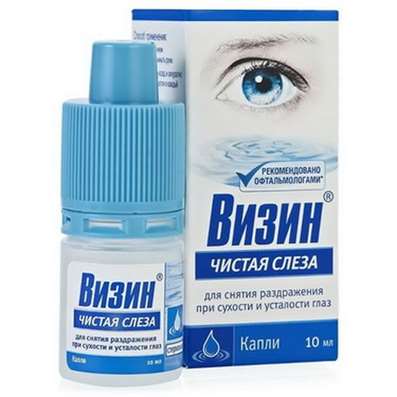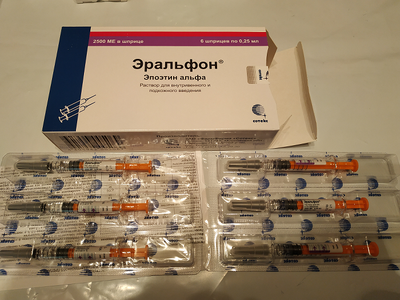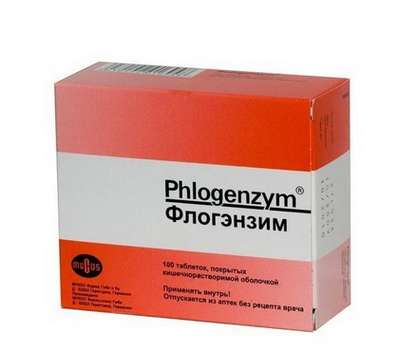Instruction for use: Theraflex Advance
I want this, give me price
Active substance Glucosamine + Ibuprofen + Chondroitin sulfate
ATX code M01AE51 Ibuprofen in combination with other drugs
Pharmacological group
Regeneration of tissue stimulant + non-steroidal anti-inflammatory drug [Correctors of bone and cartilage tissue metabolism in combinations]
Nosological classification (ICD-10)
M19.9 Arthrosis, unspecified
Change in brush with osteoarthritis, Osteoarthritis, Osteoarthrosis, Arthrosis of large joints, Pain syndrome in osteoarthritis, Pain syndrome in acute inflammatory diseases of the musculoskeletal system, Pain syndrome in chronic inflammatory diseases of the musculoskeletal system, Deforming arthrosis, Deforming osteoarthritis, Deforming osteoarthritis of joints, Osteoarthritis in the acute stage, Osteoarthritis of large joints, Acute pain syndrome with osteoarthritis, Post-traumatic osteoarthritis, Rheumatic osteoarthritis, Spondylarthrosis, Chronic osteoarthritis
M25.5 Pain in the joint
Arthralgia, Pain syndrome in musculo-articular diseases, Pain syndrome in osteoarthritis, Pain syndrome in osteoarthritis, Pain syndrome in acute inflammatory diseases of the musculoskeletal system, Pain syndrome in chronic inflammatory diseases of the musculoskeletal system, Pain in the joints, Soreness of the joints, Soreness of joints in severe physical exertion, Painful inflammatory joint damage, Painful conditions of the musculoskeletal system, Painful joint conditions, Painful traumatic affection of joints, Pain in the musculoskeletal system, Pain in Shoulder Joints, Pain in the joints, Joint pain, Joint pain with injuries, Musculoskeletal pain, Pain with osteoarthritis, Pain in the pathology of the joints, Pain in rheumatoid arthritis, Pain in chronic degenerative bone diseases, Pain in chronic degenerative joint diseases, Bone-joint pain, Joint pain, Arthritic pain of rheumatic origin, Articular pain syndrome, Joint pain, Rheumatic pain, Rheumatic pains
M42 Osteochondrosis
Pain in spinal osteochondrosis, Cervical osteochondrosis, Radicular syndrome in osteochondrosis, intervertebral osteochondrosis, osteochondrosis, Osteochondrosis with radicular syndrome, Osteocondritis of the spine
M54 Dorsalgia
Pain in the back area, Pain in the spine, Back pain, Pain in different parts of the spine, Backache, Painful pain syndrome in the spine, Pain in the musculoskeletal system
M54.5 Pain below the back
Pain in the lower back, Lumbar pain, Lumbalia, Painful conditions of the spinal column, Back pain, Lower Back Pain Syndrome
Composition
Capsules 1 caps.
active substances:
glucosamine sulfate (in the form of D-glucosamine potassium chloride sulfate) 250 mg
chondroitin sodium sulfate 200 mg
(in the form of 90% of the substance, taking into account the 10% loss in weight during drying and the excess - 241 mg)
ibuprofen 100 mg
(in the form of direct compression granules 66% (ibuprofen 66%, pregelatinized starch 8%, croscarmellose sodium 2%, MCC 14%, silicon colloidal dioxide 1%, stearic acid 1.5%, corn starch 6 %, povidone - 1.5%) - 152 mg)
auxiliary substances: MCC - 17.4 mg; corn starch (pregelatinized starch) 4.1 mg; Stearic acid - 10.2 mg; sodium carboxymethyl starch - 10 mg; crospovidone - 10 mg; magnesium stearate - 3 mg; silicon dioxide - 2 mg; Povidone 0.3 mg
gelatin capsule: gelatin - 97.07 mg; titanium dioxide - 2.83 mg; dye of a brilliant blue aluminum lacquer - 0.09 mg
ink composition: shellac NF; ethyl alcohol, dehydrated USP; isopropyl alcohol USP; alcohol butyl NF; propylene glycol USP; ammonia solution NF; indigo carmel aluminum varnish; titanium dioxide USP
Description of dosage form
Opaque hard gelatin capsules with a size of 0, consisting of two parts - a blue cap and a white body with a blue "THERAFLEX ADVANCE", filled with a white or almost white powder with a faint smell.
pharmachologic effect
Pharmacological action - anti-inflammatory, analgesic, stimulating regeneration of cartilaginous tissue.
Pharmacodynamics
Teraflex® Advance is a combined preparation containing chondroitin sulfate, glucosamine sulfate and ibuprofen as active components.
Chondroitin sulfate participates in the construction and restoration of cartilaginous tissue, protects it from destruction and improves the mobility of the joints.
Glucosamine sulfate activates the synthesis of proteoglycans, hyaluronic, chondroitinsulfuric acids and other substances that make up the articular membranes, intraarticular fluid and cartilaginous tissue.
Ibuprofen is a derivative of propionic acid and has analgesic, antipyretic and anti-inflammatory effects due to the indiscriminate blockade of COX-1 and COX-2.
The glucosamine sulfate and chondroitin sulfate in the preparation potentiate the analgesic effect of ibuprofen.
Pharmacokinetics
Bioavailability of glucosamine with oral administration is 25% (the effect of the first passage through the liver), the highest concentrations are found in the liver, kidneys and articular cartilage. About 30% of the dose is persistently persistent in bone and muscle tissue. Excreted mainly with urine in unchanged form, in part - with feces. T1 / 2 - 68 h.
More than 70% of chondroitin sulfate is absorbed in the digestive tract. Bioavailability is about 13%. With a single admission of a medial therapeutic dose of Cmax in the plasma observed after 3-4 hours, in synovial fluid - after 4-5 hours. Absorbed in the gastrointestinal tract accumulates in the synovial fluid. It is excreted by the kidneys.
Ibuprofen is well absorbed from the stomach. Tmax - about 1 h. Ibuprofen is approximately 99% associated with plasma proteins. It is slowly distributed in the synovial fluid and is withdrawn from it more slowly than from the plasma. Ibuprofen is metabolized in the liver mainly by hydroxylation and carboxylation of the isobutyl group. The isozyme CYP2C9 is involved in the metabolism of the drug. After absorption, about 60% of the pharmacologically inactive R-form of ibuprofen is slowly transformed into an active S-form. Ibuprofen has a two-phase kinetics of elimination. T1 / 2 from the plasma is 2-3 hours. Up to 90% of the dose can be detected in the urine in the form of metabolites and their conjugates. Less than 1% is excreted unchanged in the urine and to a lesser extent - with bile. Ibuprofen is completely excreted within 24 hours.
Indications
Osteoarthritis of large joints, osteochondrosis of the spine, accompanied by a moderate pain syndrome.
Contraindications
hypersensitivity to any of the ingredients that make up the drug;
hypersensitivity to acetylsalicylic acid or other NSAIDs in history;
erosive and ulcerative diseases of the digestive tract (including peptic ulcer of the stomach and duodenum in the acute stage, Crohn's disease, ulcerative colitis);
complete or incomplete combination of bronchial asthma, recurrent nasal polyposis and paranasal sinuses;
confirmed hyperkalemia;
hemophilia and other disorders of blood clotting (including hypocoagulation), hemorrhagic diathesis;
gastrointestinal bleeding and intracranial hemorrhage;
severe renal failure (Cl creatinine less than 30 mL / min), progressive kidney disease;
severe hepatic impairment or active liver disease;
severe heart failure, period after aortocoronary bypass surgery;
pregnancy;
lactation period;
children's age till 18 years.
With caution: old age; heart failure; arterial hypertension; cirrhosis of the liver with portal hypertension; hepatic and / or renal insufficiency; nephrotic syndrome; hyperbilirubinemia; peptic ulcer of the stomach and duodenum (in the anamnesis); gastritis; enteritis; colitis; blood diseases of unclear etiology (leukopenia and anemia); bronchial asthma; diabetes; concomitant therapy with anticoagulants, antiplatelet agents, GCS, SSRIs; diseases of peripheral arteries; moderate renal insufficiency (Cl creatinine 30-60 ml / min); smoking; alcoholism; dyslipidemia / hyperlipidemia; cardiac ischemia; cerebrovascular diseases; presence of Helicobacter pylori infection; long-term use of NSAIDs; tuberculosis; severe physical illness.
With intolerance to seafood (shrimp, shellfish), the likelihood of allergic reactions to the drug increases.
pregnancy and lactation
Not recommended for use during pregnancy and during breastfeeding.
Side effects
With the use of the drug Teraflex® Advance, nausea, abdominal pain, flatulence, diarrhea, constipation, allergic reactions, these reactions disappear after drug withdrawal.
Consider the possibility of developing side effects associated with the ibuprofen present in the preparation.
From the gastrointestinal tract: NSAID-gastropathy (abdominal pain, nausea, vomiting, heartburn, decreased appetite, diarrhea, flatulence, constipation, rarely - ulceration of the gastrointestinal mucosa, which in some cases is complicated by perforation and bleeding); irritation or dryness of the oral mucosa, pain in the mouth, ulceration of the gingival mucosa, aphthous stomatitis, pancreatitis, exacerbation of colitis and Crohn's disease.
From the hepatobiliary system: hepatitis.
On the part of the respiratory system: dyspnea, bronchospasm.
From the sense organs: hearing impairment (hearing loss, ringing or noise in the ears), visual impairment (toxic damage to the optic nerve, blurred vision or dying, scotoma, dry and irritated eyes, conjunctival edema and allergic age).
From the central nervous system and peripheral nervous system: headache, dizziness, insomnia, anxiety, nervousness and irritability, psychomotor agitation, drowsiness, depression, confusion, hallucinations; rarely - aseptic meningitis (more often in patients with autoimmune diseases).
From the CCC: the development or worsening of heart failure, tachycardia, increased blood pressure, increased risk of arterial thrombosis.
From the urinary system: acute renal failure, allergic nephritis, nephrotic syndrome (edema), polyuria, cystitis.
Allergic reactions: skin rash (usually erythematous or urticaria), skin itching, Quincke's edema, anaphylactoid reactions, anaphylactic shock, dyspnoea, fever, erythema multiforme exudative (including Stevens-Johnson syndrome), toxic epidermal necrolysis (Lyell's syndrome) , eosinophilia, allergic rhinitis.
From the hemopoiesis: anemia (including hemolytic, aplastic), thrombocytopenia and thrombocytopenic purpura, agranulocytosis, and leukopenia.
Other: increased sweating.
Laboratory indicators: bleeding time (may increase), serum glucose concentration (may decrease), Cl creatinine (may decrease), hematocrit or Hb (may decrease), serum creatinine concentration (may increase), hepatic transaminase activity (may increase), the concentration of urea in the blood (may increase), the concentration of bilirubin in the blood (may increase).
Interaction
Inducers of microsomal oxidation (phenytoin, ethanol, barbiturates, rifampicin, phenylbutazone, tricyclic antidepressants) increase the production of hydroxylated active metabolites of ibuprofen, increasing the risk of developing severe hepatotoxic reactions.
Inhibitors of microsomal oxidation reduce the risk of hepatotoxic action.
Reduces the hypotensive activity of vasodilators (including CCA and ACE inhibitors), natriuretic and diuretic - furosemide and hydrochlorothiazide.
Reduces the effectiveness of uricosuric drugs, increases the effect of indirect anticoagulants, antiplatelet agents, fibrinolytics (increased risk of hemorrhagic complications), ulcerogenic effects with hemorrhages of SCS, NSAIDs, colchicine, estrogens, ethanol; enhances the effect of oral hypoglycemic drugs and insulin.
Antacids and colestyramine reduce the absorption of ibuprofen.
Increases the concentration in the blood of digoxin, lithium and methotrexate.
Caffeine increases the analgesic effect.
With simultaneous administration of ibuprofen reduces the anti-inflammatory and antiplatelet effect of acetylsalicylic acid (possibly increasing the incidence of acute coronary insufficiency in patients receiving low doses of acetylsalicylic acid as antiplatelet agent after the onset of ibuprofen).
The simultaneous use of drugs containing glucosamine and coumarin anticoagulants (eg warfarin) may lead to an increase in INR and a risk of bleeding; it is necessary to monitor blood coagulation.
When appointing simultaneously with anticoagulant and thrombolytic drugs (alteplase, streptokinase, urokinase), the risk of bleeding increases.
Cefamandol, cefoperazone, cefotetan, valproic acid, plikamycin increase the frequency of hypoprothrombinemia.
Myelotoxic drugs increase the manifestation of hematotoxicity.
Cyclosporine and gold preparations increase the effect of ibuprofen on the synthesis of PG in the kidneys, which is manifested by increased nephrotoxicity.
Ibuprofen increases the plasma concentration of cyclosporine and the likelihood of its hepatotoxic effects.
LS, blocking tubular secretion, reduce excretion and increase the plasma concentration of ibuprofen.
In connection with the content of glucosamine in the preparation, it is possible to reduce the effectiveness of hypoglycemic drugs, doxorubicin, teniposide, etoposide.
Glucosamine increases the absorption of tetracyclines, reduces the effect of semisynthetic penicillins, chloramphenicol.
Joint reception with potassium-sparing diuretics increases the risk of hyperkalemia.
NSAIDs may reduce the effects of mifepristone.
Joint use of NSAIDs and tacrolimus may increase the risk of developing nephrotoxicity.
Joint use of zidovudine increases the risk of hematological toxicity of NSAIDs.
The combined administration of quinolones and NSAIDs increases the risk of seizures.
Dosing and Administration
Inside. Adults take 2 caps. 3 times a day after meals, washed down with a small amount of water. Duration of admission without consulting a doctor should not exceed 3 weeks. Further use of the drug should be agreed with the doctor.
Overdose
Symptoms (associated with ibuprofen): abdominal pain, nausea, vomiting, retardation, drowsiness, depression, headache, tinnitus, metabolic acidosis, coma, acute renal failure, decreased blood pressure, renal tubular acidosis, hypokalemia, hyperkalemia, bradycardia, tachycardia, atrial fibrillation, respiratory arrest.
Treatment: gastric lavage (effective only for 1 hour after intake), activated charcoal, alkaline drink, forced diuresis, symptomatic therapy (correction of acid-base state, blood pressure).
special instructions
During long-term treatment, control of the peripheral blood picture and the functional state of the liver and kidneys is necessary.
When symptoms of gastropathy appear, careful monitoring including esophagogastroduodenoscopy, a blood test with the determination of Hb, a hematocrit, a fecal occult blood test are shown.
If you need to simultaneously take additional NSAIDs and analgesics, the doctor should take into account the presence of ibuprofen in the preparation. If prolonged intake of additional NSAIDs is required, Teraflex®, which does not contain ibuprofen, should be used.
If it is necessary to determine 17-ketosteroids, the drug should be discontinued 48 hours before the test.
During the period of treatment, alcohol intake is not recommended.
Impact on the ability to manage machinery and other vehicles. During the treatment period, one should refrain from driving vehicles and performing actions requiring concentration of attention or psychomotor reactions.
Form of issue
Capsules, 250 mg + 200 mg + 100 mg. For 30, 60, 120 caps. is placed in a vial of HDPE with a screw cap made of polypropylene. The neck of the vial is sealed with a protective membrane. The lid and the neck of the bottle are sealed with a transparent film.
Each bottle is placed in a cardboard box.
Conditions of leave from pharmacies
Without recipe.
storage Conditions
At a temperature of no higher than 25 ° C.
Keep out of the reach of children.
Shelf life
2 years.
Do not use after the expiry date printed on the package.

 Cart
Cart





